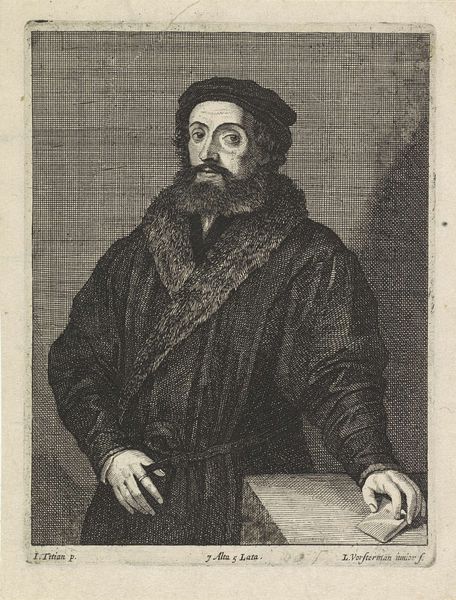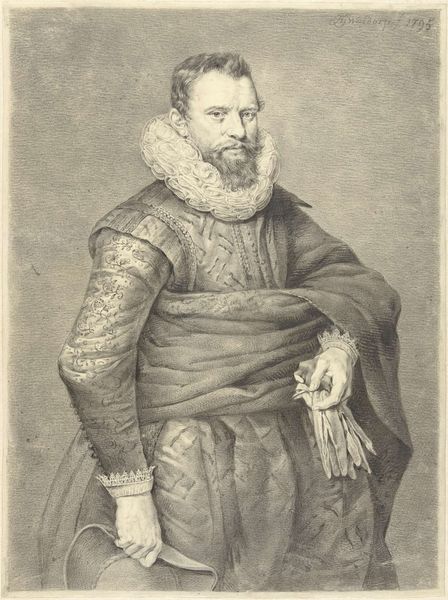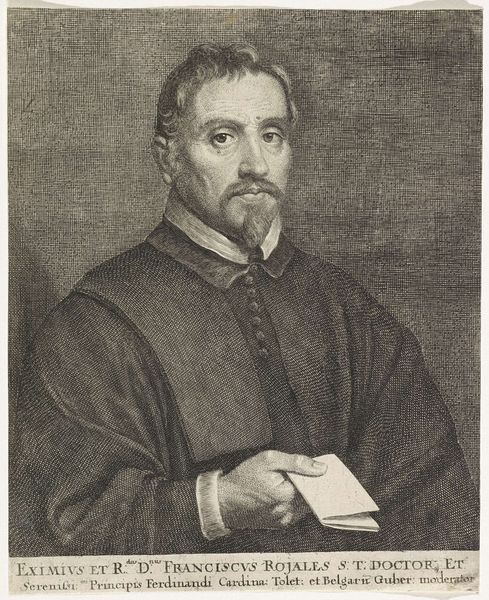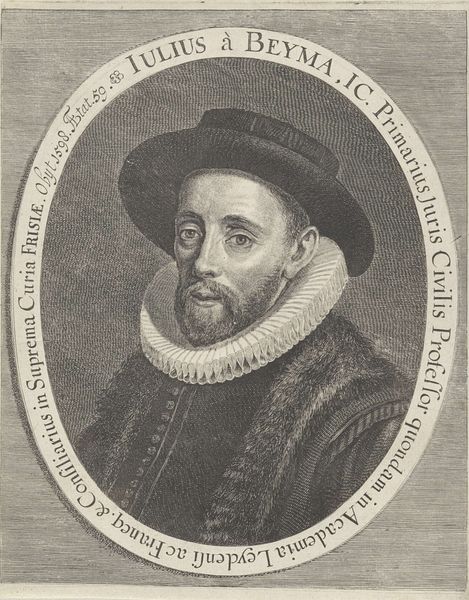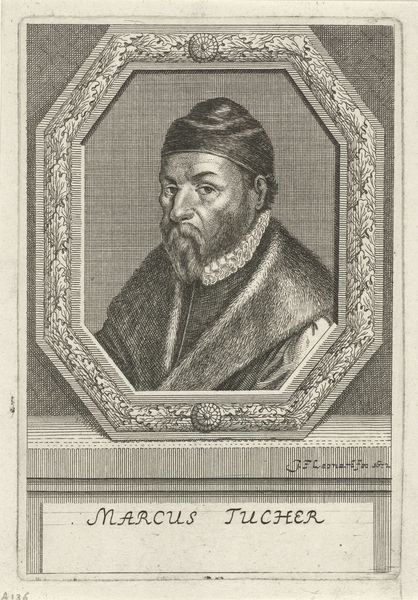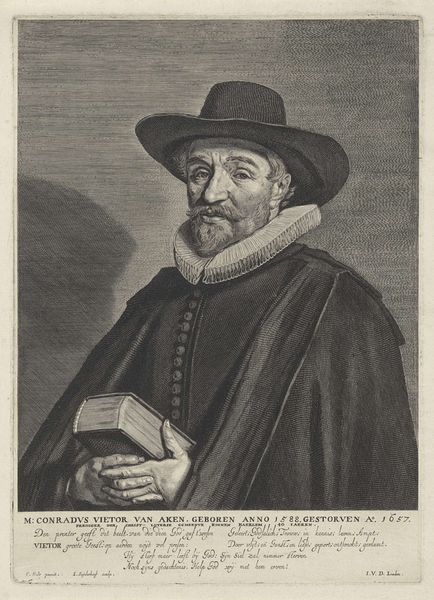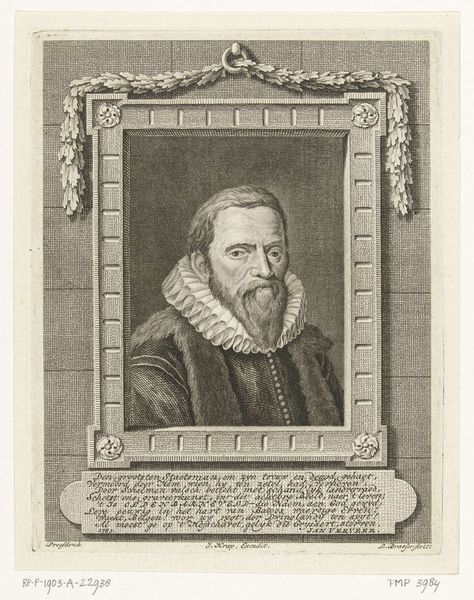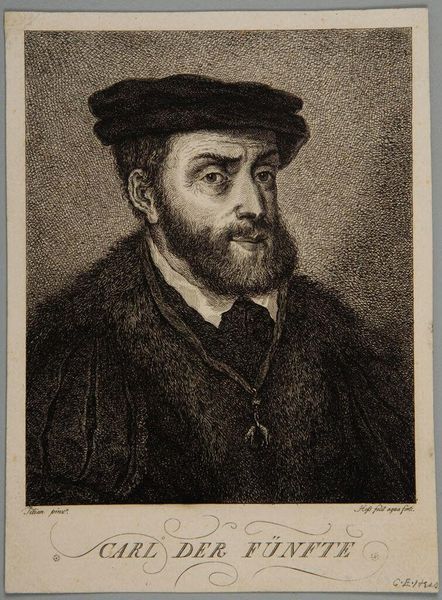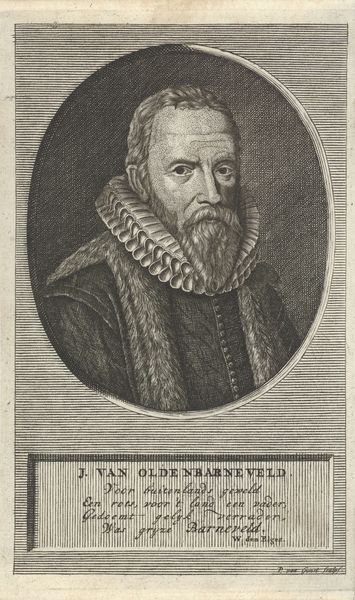
print, engraving
#
portrait
#
baroque
# print
#
line
#
history-painting
#
engraving
Dimensions: height 135 mm, width 111 mm
Copyright: Rijks Museum: Open Domain
Lucas Vorsterman I made this engraving of Justus Lipsius, a luminary of his time, sometime between 1595 and 1675. Look at the details: the ruff, the fur-lined coat, and the hat mark Lipsius as a man of status in the 17th-century Netherlands. More than that, Lipsius was a celebrated philologist and humanist whose work revived Stoic philosophy. But his intellectual positions weren't without controversy. He navigated the fraught religious and political landscape of his time, teaching at both Leiden University, a Protestant stronghold, and later at the Catholic University of Leuven. The inscription "fui seculi lumen" suggests that this print was made after Lipsius’s death, in 1606. It translates to "he was the light of his century,". Vorsterman’s print immortalizes Lipsius, but it also reflects the institutional forces that shaped his legacy. To understand this image fully, we might consult the archives of Leiden and Leuven universities, as well as the correspondence of scholars from the period. The meaning of art is always contingent on its social and institutional context.
Comments
No comments
Be the first to comment and join the conversation on the ultimate creative platform.


